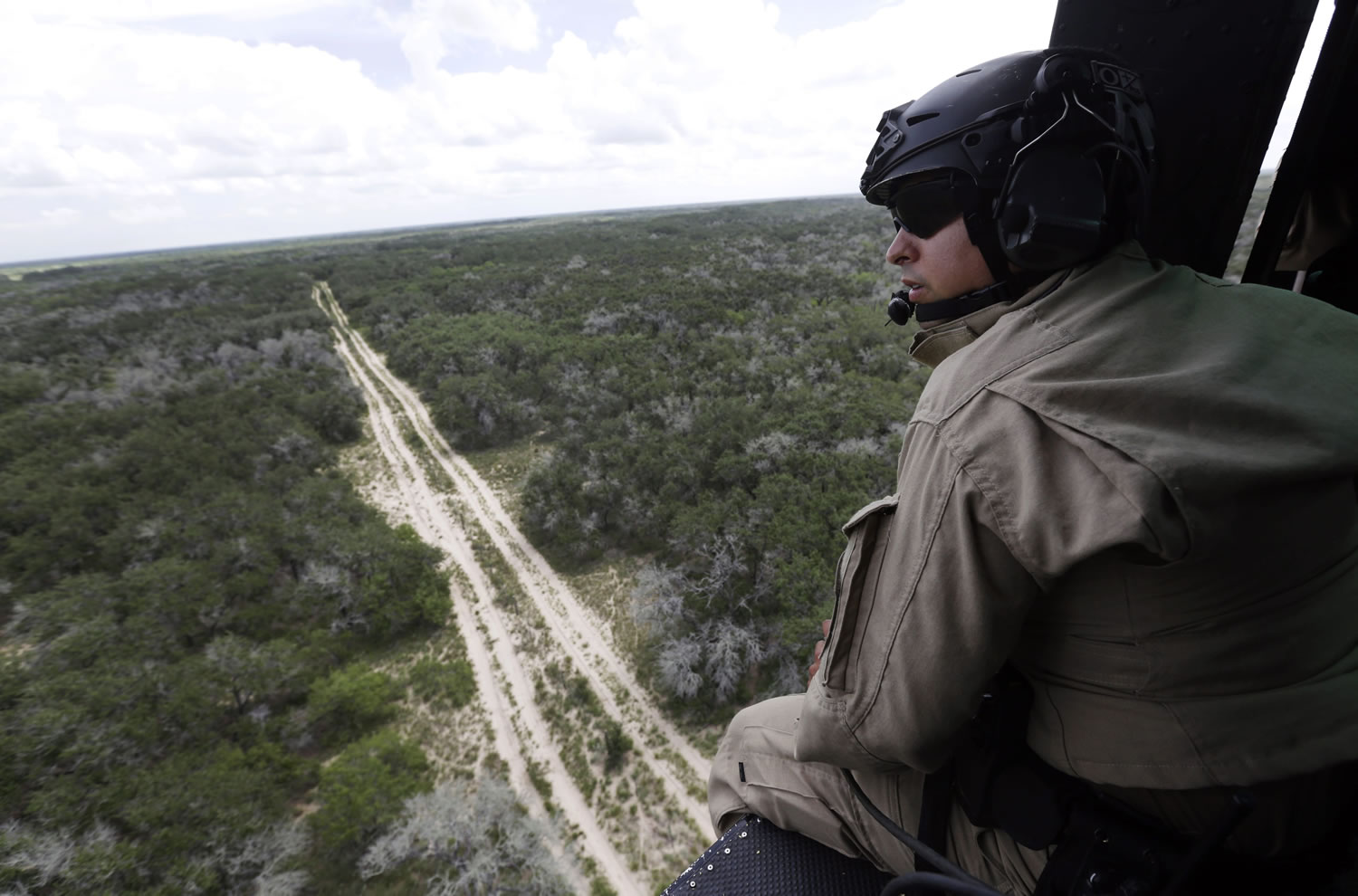RIO GRANDE CITY, Texas — Not long ago, the U.S. Border Patrol was the only law enforcement agency monitoring the mesquite thickets and sugarcane fields along the Rio Grande, and an agent’s challenge was to distinguish between an exhausted immigrant and a threat.
Now the thick brush teems with hundreds of state troopers, National Guardsmen and civilian militia members, all heavily armed, often wearing tactical vests and camouflage.
Since illegal immigration spiked in the Rio Grande Valley this summer, the Border Patrol has dispatched more agents, the Texas Department of Public Safety has sent more troopers and Gov. Rick Perry deployed as many as 1,000 guardsmen to the area. Officials refuse to release exact numbers, but Texas is spending $1.3 million a week on state troopers and about $12 million a month on the guardsmen.
Field communication among the armed agents is fragmented, and a recent friendly-fire incident involving a militia member prompted the Border Patrol to urge last week that law enforcement be left to the professionals. Meanwhile, in border communities, some locals fear that the increased security presence is more of a threat.
Coordination is challenging among the law enforcement entities alone. They use different radio equipment, which complicates direct communication in the field. So their representatives sit side by side in a 24/7 command center to avoid surprises — “deconfliction” in law enforcement parlance. Each shift of Border Patrol agents is briefed on the presence and activities of other entities before going into the field.
And then armed civilian militias have joined the fray in unknown numbers.
“Sometimes it can be dangerous, because you have all these (nonlaw-enforcement) people out there running around the border,” said Kevin Oaks, the Border Patrol’s chief in the valley. “There are cartel members that carry assault weapons and camouflage, and then there’s others that may be under the auspices of whatever group, may look very similar, and we have no idea who those people are. My fear is that these things clash and eventually there will be a very bad outcome.”
That was nearly the case Aug. 29, when a Border Patrol agent pursuing a group of immigrants near the Rio Grande east of Brownsville spun around to find a man in civilian clothes holding a rifle. The agent fired several shots but didn’t hit the man, who was patrolling with a citizens’ militia group.
The National Guard’s deployment so far has barely registered with area residents. Soldiers circulate mostly between their hotels and border observation points. State troopers, in their black and white vehicles, are far more visible.
On a recent evening, 15 troopers could be seen driving from one side of Rio Grande City to the other. They were among 31 units seen on a 35-mile stretch of border highway between Escobares and Penitas.
Sacrificing privacy
Rio Grande City Mayor Ruben Villarreal is philosophical about the troopers lining his main street and the guardsmen filling his Holiday Inn. Border towns are often buffeted by decisions made in far-off capitals on both sides of the border, and they learn to adapt and persevere over time.
“Living along the border has made us so resilient,” he said. “If we want a sense of security in the nation — because it’s not just security for Rio Grande City or Texas, it’s for the nation — we have to understand there are going to be compromises.”
But the heightened security presence has rattled some residents, even though they are used to living in a region with a ubiquitous law enforcement presence.
About 50 people gathered Thursday at the San Juan offices of La Union del Pueblo Entero, a labor advocacy group. A woman took the microphone and asked the crowd how many of them were worried about the intensified DPS patrols. Nearly everyone in the room raised their hand.
Among them was Isabel Barbosa, of La Joya, who said she was riding in a car with her mother and four siblings last month when a state trooper pulled them over, saying her mother had crossed the white line on the shoulder of the road.
Barbosa, 21, said her mother was initially told she would receive only a warning. But she was taken into custody after a Border Patrol agent arrived and determined she was in the country illegally. She was deported the next day after living in the U.S. for 18 years, leaving behind a sick husband and five children, the youngest of whom is 3.
“People are afraid to go out even to the store. They can’t take their children even to the clinics. They can’t do anything,” Barbosa said.
Villarreal concedes that some of his constituents have been taken aback by the increased security and warns visitors to closely observe the speed limit, even though troopers find other reasons, such as dark window tints, to make stops.
“We sacrifice privacy an awful lot down here for the security that this nation needs,” Villarreal said.



